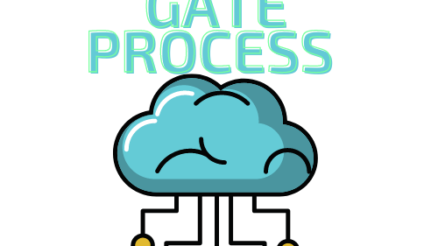Change management and release management are two critical disciplines within organizations that play vital roles in managing organizational transitions and software releases.
While the terms may sound similar and often cause confusion, they have distinct purposes and processes.
Here we will explore what is difference between change management and release management, shedding light on their respective objectives, processes, and stakeholders.
By understanding these differences, we can clarify their roles and unlock the potential for effective change and release management strategies in our organizations.
So, let’s delve into the world of change management and release management and discover how they contribute to the success of businesses in today’s dynamic and fast-paced environments.
what is change management?
Change management refers to the systematic approach and set of processes that organizations employ to transition from their current state to a desired future state.
It involves planning, implementing, and managing changes across various aspects of an organization, including its structure, culture, processes, technology, and people.
Change management aims to minimize resistance to change, maximize employee adoption and engagement, and ultimately achieve successful outcomes during periods of organizational transformation.
This discipline focuses on understanding the impact of change, developing strategies to address challenges, and facilitating effective communication and collaboration among stakeholders throughout the change process.
what is release management?
Release management refers to the process and set of activities involved in planning, coordinating, and deploying software releases or updates within an organization.
It is primarily focused on managing the lifecycle of software releases, ensuring smooth and efficient delivery from development to production environments.
Release management encompasses the planning, scheduling, building, testing, and deployment of software releases, while also considering factors such as risk management, version control, and change management.
The primary goal of release management is to deliver high-quality software releases that meet the needs and expectations of end-users while minimizing disruptions and risks to the production environment.
It involves collaborating with development teams, quality assurance teams, operations teams, and other stakeholders to ensure that the release process is well-coordinated and aligns with business objectives.
Processes and steps involved in change management
These steps provide a general framework for change management, but it’s important to note that the specific processes and steps may vary depending on the organization, industry, and the nature of the change being implemented. Flexibility and adaptability are key to tailoring the change management approach to the unique needs and circumstances of each organization.
- Change identification and request:
- Identify the need for change through various sources like feedback, performance indicators, or business requirements.
- Evaluate and prioritize change requests based on their potential impact and alignment with organizational goals.
- Impact assessment and analysis:
- Assess the potential impact of the proposed change on different aspects such as operations, systems, processes, resources, and stakeholders.
- Conduct a thorough analysis of the risks, benefits, costs, and feasibility associated with the change.
- Change planning and communication:
- Develop a detailed plan outlining the scope, objectives, resources, timeline, and dependencies of the change.
- Communicate the planned change to all relevant stakeholders, ensuring clear and transparent communication channels.
- Change implementation and testing:
- Execute the change plan, which may involve modifying systems, processes, or organizational structures.
- Conduct thorough testing to validate the effectiveness and functionality of the implemented change.
- Address any issues or challenges that arise during the implementation phase.
- Change evaluation and documentation:
- Evaluate the outcomes of the implemented change against the predetermined objectives and success criteria.
- Collect feedback from stakeholders and assess the level of acceptance and satisfaction with the change.
- Document the change management process, including lessons learned, best practices, and any adjustments made during the implementation.
Processes and steps involved in release management
Throughout the release management process, effective communication, collaboration, and documentation are crucial. It’s important to involve key stakeholders, such as development teams, operations teams, project managers, and end-users, to ensure successful coordination and alignment with organizational goals.
Additionally, continuous improvement and feedback loops play a vital role in refining the release management process and enhancing future releases.
- Release planning and scheduling:
- Define the release scope and objectives based on business requirements and priorities.
- Identify and prioritize features, enhancements, or bug fixes to be included in the release.
- Develop a release schedule, considering dependencies, resources, and potential impacts on stakeholders.
- Release build and configuration:
- Create the necessary build packages or software artifacts for the release.
- Ensure proper version control and configuration management of the release components.
- Perform any required packaging, bundling, or bundling of the software.
- Release testing and quality assurance:
- Conduct comprehensive testing of the release to ensure its functionality, stability, and quality.
- Perform different types of testing, such as unit testing, integration testing, and system testing.
- Address and fix any identified defects or issues during the testing phase.
- Release deployment and rollout:
- Plan and execute the deployment of the release to the target environment, such as production or staging.
- Coordinate with operations teams to ensure a smooth and controlled deployment process.
- Follow established deployment procedures, including any necessary rollback plans or contingency measures.
- Release monitoring and support:
- Monitor the release in the production environment to ensure its stability and performance.
- Address any issues, incidents, or customer feedback related to the release promptly.
- Provide ongoing support and maintenance for the released software, including bug fixes or feature enhancements as required.
What is Difference between Change Management and Release Management
It is important to know what is difference between change management and release management.
Why?
Because it enables organizations to establish clear roles, optimize resource allocation, mitigate risks, seamlessly integrate processes, and make informed decisions.
This knowledge enhances the overall efficiency and effectiveness of both disciplines, ultimately contributing to the organization’s success and adaptability in a rapidly evolving business landscape.
Given below are key differences between these two disciplines:
Scope and focus
There is a basic difference of scope and focus between change management and release management.
Change management encompasses broader organizational changes
Change management has a broader scope compared to release management as it encompasses a wide range of organizational changes beyond software releases.
Change management deals with changes in organizational structure, processes, culture, policies, and people. It focuses on managing transitions and ensuring smooth adoption of changes across the entire organization.
These changes can be strategic, operational, or cultural in nature and may impact multiple departments or functions within the organization. Change management aims to address the human side of change, ensuring that employees are prepared, engaged, and supported throughout the change process.
Release management is specific to software and IT releases
On the other hand, release management has a more specific focus and is primarily related to software and IT releases.
It is a discipline within software development and IT operations that deals with the planning, coordination, and deployment of software releases or updates.
Release management primarily focuses on managing the lifecycle of software releases, from development to production environments.
It involves tasks such as release planning, build and configuration management, testing and quality assurance, deployment, and ongoing monitoring and support.
Release management ensures that software releases are delivered efficiently, with minimal disruptions and risks to the production environment.
Timing and frequency
Both approaches serve different purposes and require different strategies to effectively manage the timing and frequency of changes and releases within an organization.
Change management deals with ongoing changes and initiatives
Change management is a continuous process that deals with ongoing changes within an organization. It recognizes that change is a constant and necessary aspect of business operations.
Change management initiatives can be triggered by various factors such as market shifts, technological advancements, organizational growth, or process improvements.
Change management involves identifying, evaluating, and implementing changes as they arise, ensuring that they are effectively managed, communicated, and integrated into the organization.
The timing of change management activities is driven by the need for change rather than predetermined intervals.
Release management focuses on planned releases at specific intervals
In contrast, release management is more focused on planned releases at specific intervals.
It follows a structured release cycle or schedule, where software releases or updates are planned and coordinated to ensure a controlled and efficient deployment process.
Release management typically involves setting release milestones, defining release schedules, and aligning releases with business objectives or customer demands.
The timing of release management activities is often predetermined and aligned with release cycles, such as monthly, quarterly, or biannual releases.
This regularity allows organizations to manage resources, conduct thorough testing, and ensure a predictable and reliable release process.
Stakeholders and responsibilities
Change management and release management has different stakeholders and responsibilities.
Change management involves multiple stakeholders across the organization
Change management involves engaging and collaborating with various stakeholders across different levels and departments within the organization.
The stakeholders involved in change management can include senior leadership, department heads, project managers, HR personnel, employees, and even external stakeholders such as clients or vendors.
This is because organizational changes often impact multiple areas of the business, and the success of change initiatives relies on the active involvement and support of key stakeholders.
Change management aims to address the concerns, needs, and perspectives of these stakeholders, ensuring their buy-in, cooperation, and commitment to the change process.
Release management primarily involves IT and development teams
In contrast, release management primarily involves IT and development teams responsible for the planning, development, testing, and deployment of software releases.
The stakeholders in release management typically include software developers, quality assurance teams, release managers, IT operations teams, and infrastructure personnel.
These stakeholders collaborate closely to ensure the successful delivery of software releases within the defined schedule and quality standards.
Release management focuses on the technical aspects of the release process, including build management, configuration control, deployment procedures, and monitoring.
While other stakeholders such as end-users or customer support may be involved in providing feedback or testing, their involvement is typically more limited compared to change management.
Process and documentation requirements
There is also different requirements of process and documentation related to both approaches.
Change management requires thorough analysis, planning, and documentation
Change management involves a comprehensive analysis of the proposed change, its potential impact, and the necessary steps to implement it successfully.
This analysis includes assessing the risks, benefits, and feasibility of the change, as well as considering the resources and stakeholders involved. Change management requires careful planning to determine the appropriate strategies, timelines, and communication channels for the change.
Documentation is a crucial aspect of change management, as it helps capture and communicate important information about the change, such as the change request, impact assessment, change plans, communication plans, and evaluation results.
Thorough documentation ensures transparency, consistency, and knowledge transfer throughout the change process.
Release management focuses on the technical aspects of release and deployment
In contrast, release management places more emphasis on the technical aspects of releasing software and deploying it to the target environment.
It involves tasks such as building, packaging, configuring, and testing the software release to ensure its functionality and quality.
Release management focuses on developing and following well-defined processes and procedures to facilitate a controlled and efficient release and deployment process.
While documentation is still important in release management, it primarily centers around technical documentation, such as release notes, build instructions, deployment plans, and configuration details. The documentation in release management is more focused on providing technical guidance and reference material for the teams involved in the release process.
Relationship and collaboration between Change Management and Release Management
Collaboration between these two disciplines is crucial to align efforts, effectively manage changes, and ensure smooth and controlled deployment. By working together, change management and release management can optimize their processes, minimize risks, and achieve desired organizational outcomes.
Change management and release management often overlap and depend on each other
Change management and release management are closely intertwined and often overlap in their activities and objectives. When organizations undergo changes, such as implementing new software or processes, change management ensures that these changes are effectively planned, communicated, and adopted.
Release management comes into play when it’s time to deploy these changes in a controlled and coordinated manner. The successful implementation of changes relies on the effective coordination and collaboration between change management and release management. The changes identified and managed in the change management process eventually become part of the planned releases in the release management process.
Effective collaboration between change management and release management leads to successful outcomes
Collaboration between change management and release management is crucial for achieving successful outcomes. Effective collaboration involves regular communication, information sharing, and coordination between the two teams.
Change management provides valuable insights into the changes being implemented, the associated risks, and the impact on stakeholders. Release management brings technical expertise and ensures the smooth deployment and integration of changes into the production environment.
By working together, these two teams can align their efforts, address potential conflicts, and synchronize their activities. Collaboration between change management and release management helps ensure that changes are deployed timely, with minimal disruption, and in accordance with the organization’s overall goals and objectives.
Best Practices for Integrating Change Management and Release Management
By implementing these best practices, organizations can foster effective integration between change management and release management, ensuring smoother transitions, minimized risks, and improved outcomes for both changes and releases.
A. Establishing clear communication channels between the two teams
- Foster open and transparent communication between change management and release management teams.
- Ensure regular meetings, updates, and collaboration to share information, discuss dependencies, and address any issues or concerns.
- Use tools or platforms that facilitate effective communication and document sharing between the teams.
B. Implementing a standardized change and release management process
- Establish a well-defined and standardized process that outlines the steps, roles, and responsibilities of both change management and release management.
- Clearly define the handoff points and ensure a smooth transition between the two processes.
- Document the process in a centralized repository to ensure accessibility and consistency.
C. Aligning change and release schedules for seamless coordination
- Coordinate and align the change management and release management schedules to minimize conflicts and maximize efficiency.
- Involve both teams in planning and scheduling discussions to identify potential bottlenecks or overlaps.
- Consider the dependencies between changes and releases and ensure that they are appropriately sequenced and coordinated.
D. Sharing knowledge and information to ensure smooth transitions
- Facilitate knowledge sharing and collaboration between change management and release management teams.
- Document and share relevant information, such as change requests, release plans, testing results, and deployment instructions.
- Conduct knowledge transfer sessions to ensure that both teams have a comprehensive understanding of the changes and releases.
E. Continuous improvement and learning from past experiences
- Regularly evaluate the effectiveness of the integrated change and release management process.
- Analyze metrics, feedback, and lessons learned from previous changes and releases to identify areas for improvement.
- Encourage a culture of continuous learning, where teams actively seek feedback, share insights, and implement process enhancements.
Final Words
It is important to know what is difference between change management and release management. These both approaches are distinct but also interconnected and organizations can greatly benefit from integration and collaboration between these both. By establishing clear communication channels, implementing standardized processes, aligning schedules, sharing knowledge, and embracing continuous improvement, organizations can achieve seamless coordination between change management and release management.



